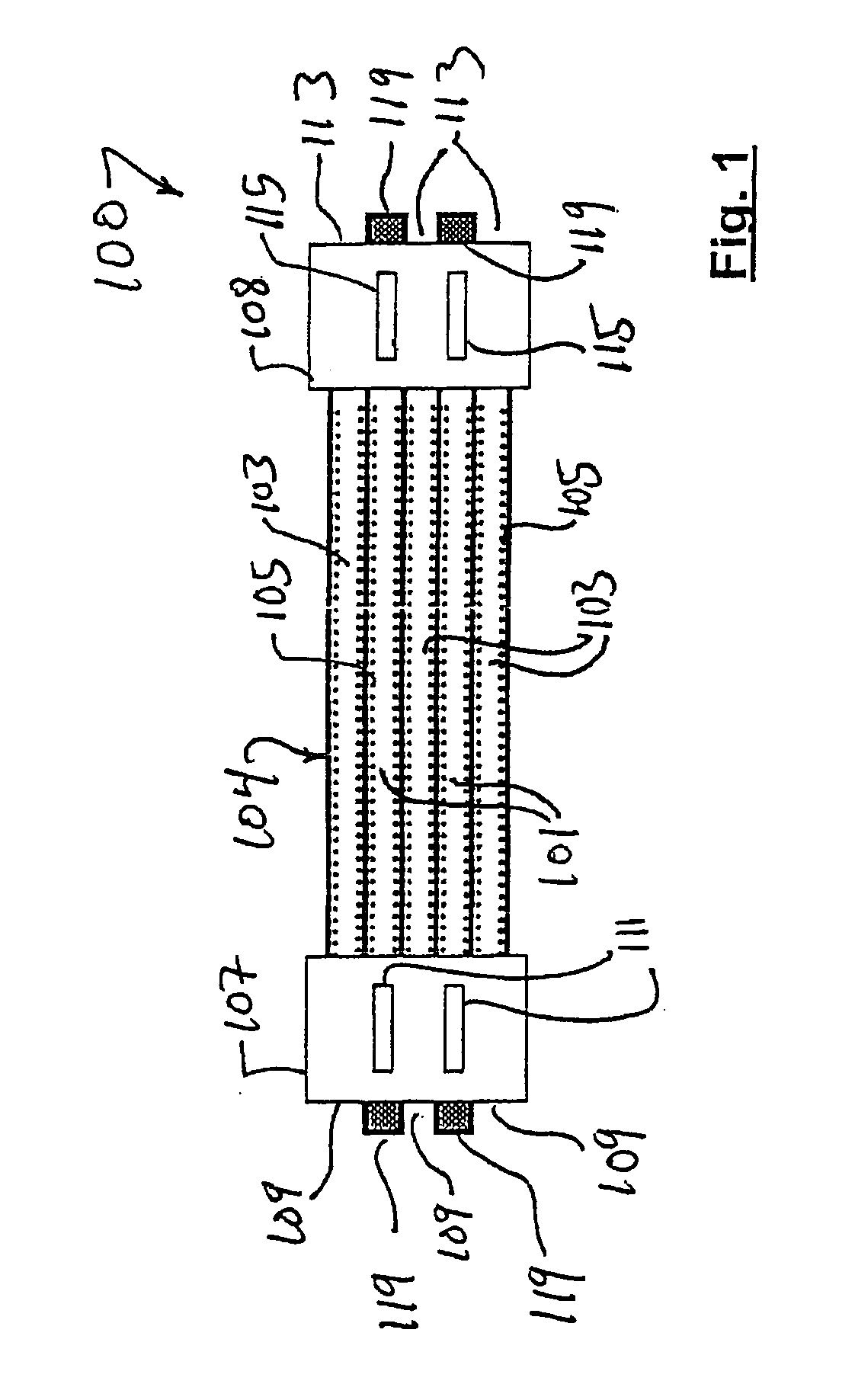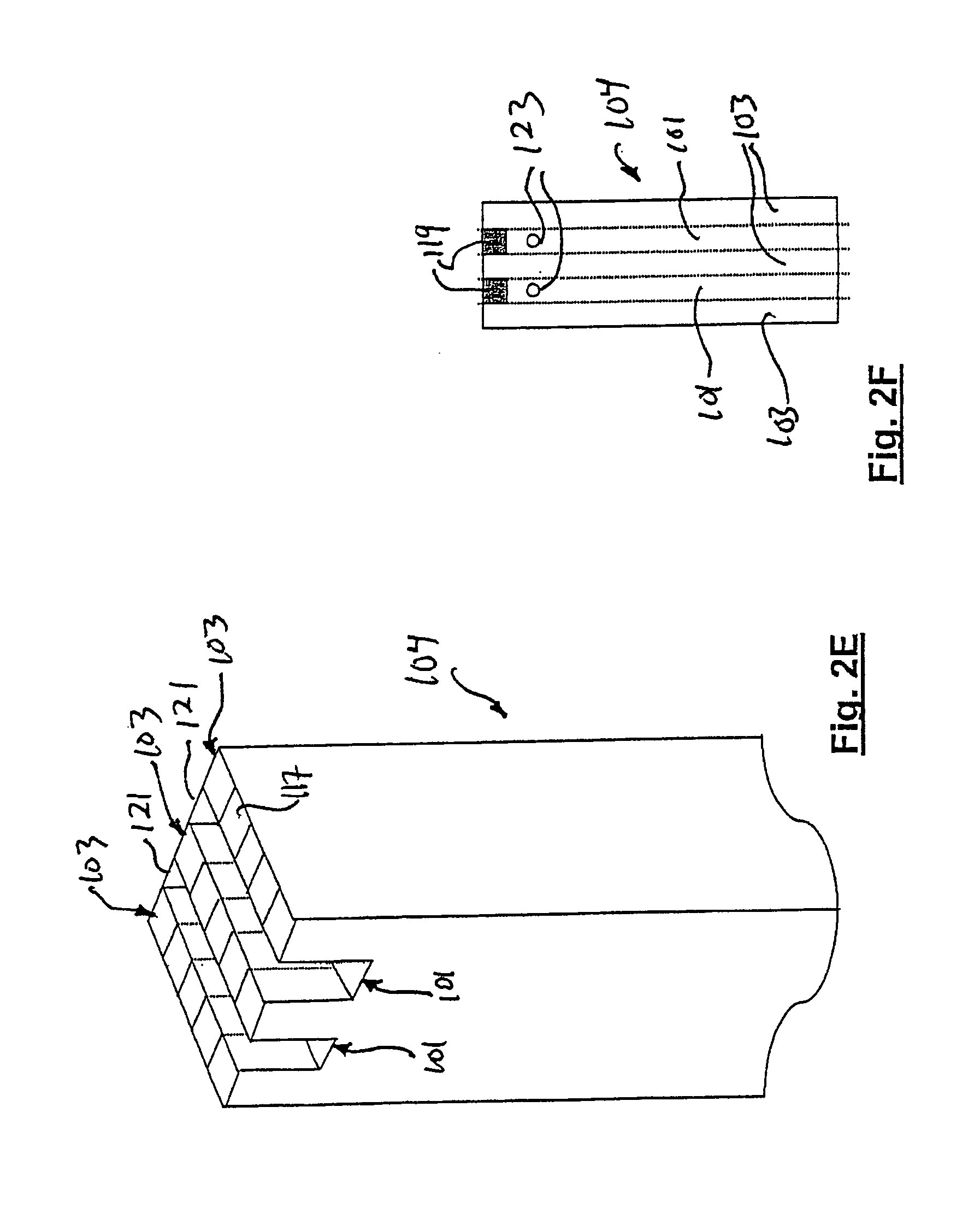Thermally coupled monolith reactor
- Summary
- Abstract
- Description
- Claims
- Application Information
AI Technical Summary
Benefits of technology
Problems solved by technology
Method used
Image
Examples
example 1
[0042] In this example, reaction 1 is the steam reforming of methane, expressed by Equation 2:
CH4+H2O⇄CO+3H2 ΔHf=206 kJ / mol (2)
This fast and energetic process requires that a significant amount of energy be supplied to the catalyst to prevent the process from becoming thermally limited. This heat is to be supplied by reaction 2, which, in this example, is the catalytic oxidation of methane, expressed by Equation 3:
CH4+O2→CO2+H2O ΔHf=−800 kJ / mol (3)
Approximately 0.25 mol of methane is combusted for each mol of methane processed. The overall process consists of first preheating the reactants to the required temperature. It ensures good thermal management for the products leaving the reactor to be used to preheat the incoming reactants to a temperature close to the reaction temperature. The methane, oxygen, and associated nitrogen (reaction 2) flow through the inlets 109 of the inlet manifold 107 and into the reaction channels 117 of the flow path 103. Heterogeneous oxidation...
PUM
| Property | Measurement | Unit |
|---|---|---|
| Thickness | aaaaa | aaaaa |
| Flow rate | aaaaa | aaaaa |
| Shape | aaaaa | aaaaa |
Abstract
Description
Claims
Application Information
 Login to View More
Login to View More - R&D
- Intellectual Property
- Life Sciences
- Materials
- Tech Scout
- Unparalleled Data Quality
- Higher Quality Content
- 60% Fewer Hallucinations
Browse by: Latest US Patents, China's latest patents, Technical Efficacy Thesaurus, Application Domain, Technology Topic, Popular Technical Reports.
© 2025 PatSnap. All rights reserved.Legal|Privacy policy|Modern Slavery Act Transparency Statement|Sitemap|About US| Contact US: help@patsnap.com



